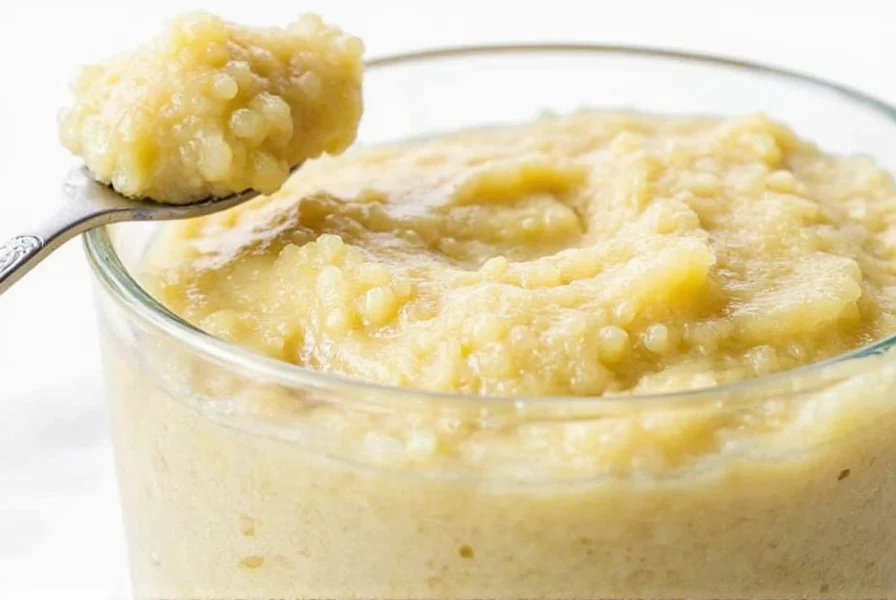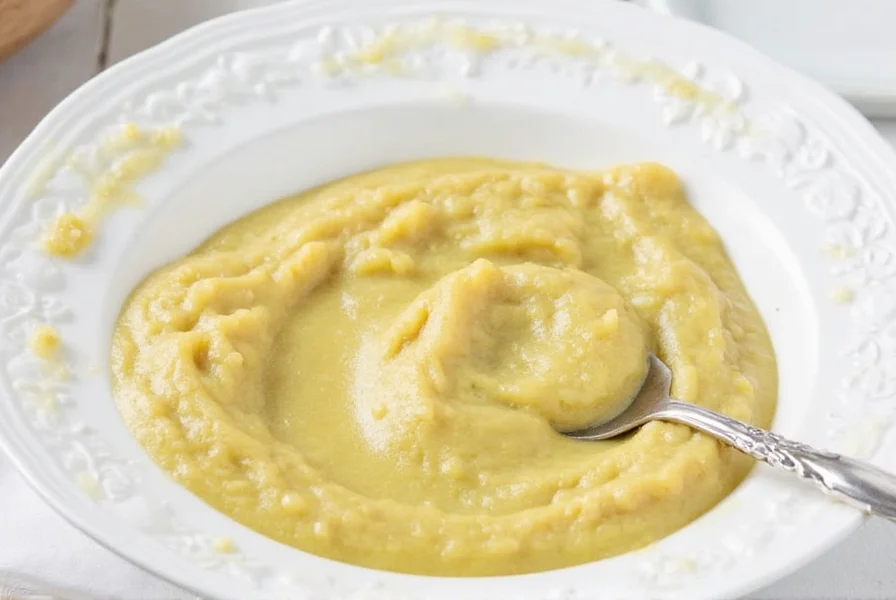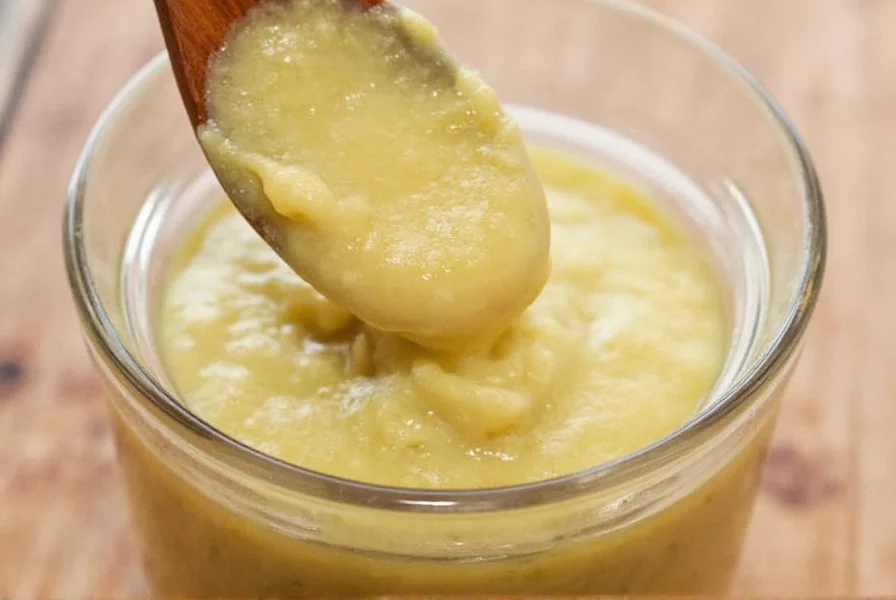Creating your own garlic ginger paste unlocks consistent flavor in curries, marinades, and stir-fries without the daily chore of peeling and mincing. This simple blend of two powerful ingredients forms the aromatic foundation for countless global dishes, from Thai curries to Indian dals. Unlike pre-packaged versions that may contain preservatives, homemade paste delivers pure, vibrant taste while reducing food waste through efficient ingredient use.
Why Garlic Ginger Paste Elevates Your Cooking
The combination of garlic and ginger creates a synergistic flavor profile that's greater than the sum of its parts. Garlic contributes its characteristic pungency and depth, while ginger adds bright, citrusy notes with subtle heat. When transformed into paste form, these ingredients release their essential oils more readily, distributing flavor evenly throughout dishes. Professional chefs rely on this paste for consistent results in high-volume cooking environments, but home cooks benefit equally from its convenience and flavor enhancement.
Simple Homemade Garlic Ginger Paste Recipe
Making garlic ginger paste requires just two ingredients and minimal equipment. For optimal results:
| Ingredient | Quantity | Preparation Notes |
|---|---|---|
| Fresh ginger root | 1 cup, peeled | Choose firm, smooth roots without wrinkles |
| Fresh garlic cloves | ½ cup, peeled | Use plump cloves without green sprouts |
| Neutral oil | 2-3 tablespoons | Avocado or grapeseed oil works best |
Combine all ingredients in a food processor and blend until completely smooth, scraping down sides as needed. The ideal consistency should be thick but spreadable, similar to tomato paste. Transfer to clean glass jars, top with a thin layer of oil to prevent oxidation, and store according to recommended methods.

Optimal Storage Methods for Maximum Freshness
Proper storage determines how long your garlic ginger paste maintains peak flavor and safety. Follow these guidelines for best results:
- Refrigeration: Store in airtight glass containers with oil barrier for 2-3 weeks. Check weekly for any discoloration or off smells.
- Freezing: Portion into ice cube trays, freeze solid, then transfer cubes to freezer bags for 4-6 months of quality storage.
- Room temperature: Never store garlic ginger paste at room temperature for more than 2 hours due to botulism risk.
When retrieving paste from storage, always use clean utensils to prevent contamination. Discard if you notice mold, significant darkening, or sour odors.
Versatile Culinary Applications
Garlic ginger paste serves as the flavor foundation for numerous global cuisines. Incorporate it into your cooking with these practical applications:
- Add 1-2 tablespoons to curry bases before adding liquids for deeper flavor development
- Mix with yogurt or oil for quick meat or vegetable marinades
- Stir into soups and stews during the sauté phase for aromatic depth
- Combine with soy sauce and vinegar for instant stir-fry sauce
- Blend into salad dressings for complex flavor without chunks
For authentic Indian cooking, maintain a 2:1 ginger-to-garlic ratio in your paste. Thai and Vietnamese recipes often benefit from a 1:1 ratio with additional lemongrass. Middle Eastern preparations typically use more garlic with less ginger.

Substitution Options When Paste Isn't Available
If you don't have garlic ginger paste on hand, these substitutions maintain flavor integrity while accommodating ingredient availability:
- Fresh alternative: Use 1 tablespoon grated ginger plus 2 teaspoons minced garlic for every tablespoon of paste
- Dry spice option: Substitute ¼ teaspoon ginger powder plus ⅛ teaspoon garlic powder (less ideal but functional in a pinch)
- Pre-made alternatives: Check Asian grocery stores for preservative-free options, though flavor intensity varies significantly
When substituting fresh for paste, add the ingredients earlier in the cooking process to allow flavors to mellow. Remember that paste delivers more concentrated flavor than fresh equivalents, so adjust quantities accordingly.
Common Questions About Garlic Ginger Paste
How long does homemade garlic ginger paste last in the refrigerator?
Properly stored in an airtight container with a protective oil layer, homemade garlic ginger paste maintains freshness for 2-3 weeks in the refrigerator. Always use clean utensils when accessing the paste to prevent contamination, and discard if you notice any mold, discoloration, or sour odors.
Can I freeze garlic ginger paste for long-term storage?
Yes, freezing is the best method for long-term storage of garlic ginger paste. Portion the paste into ice cube trays, freeze until solid, then transfer the cubes to freezer bags. Properly frozen, the paste retains optimal flavor and quality for 4-6 months. Thaw individual portions as needed in the refrigerator overnight.
What's the ideal ginger to garlic ratio for different cuisines?
The ideal ratio varies by culinary tradition: Indian cooking typically uses a 2:1 ginger-to-garlic ratio for balanced heat and warmth. Thai and Vietnamese recipes often prefer a 1:1 ratio with additional lemongrass. Middle Eastern preparations usually feature more garlic with less ginger, sometimes at a 3:1 ratio. Adjust according to your personal taste preferences and specific recipe requirements.
Why does my homemade garlic ginger paste separate in storage?
Separation occurs naturally as the oil rises to the top while the solid components settle. This is completely normal and doesn't indicate spoilage. Simply stir the paste thoroughly before each use to recombine the ingredients. To minimize separation, always store the paste with a thin protective layer of oil covering the surface.











 浙公网安备
33010002000092号
浙公网安备
33010002000092号 浙B2-20120091-4
浙B2-20120091-4